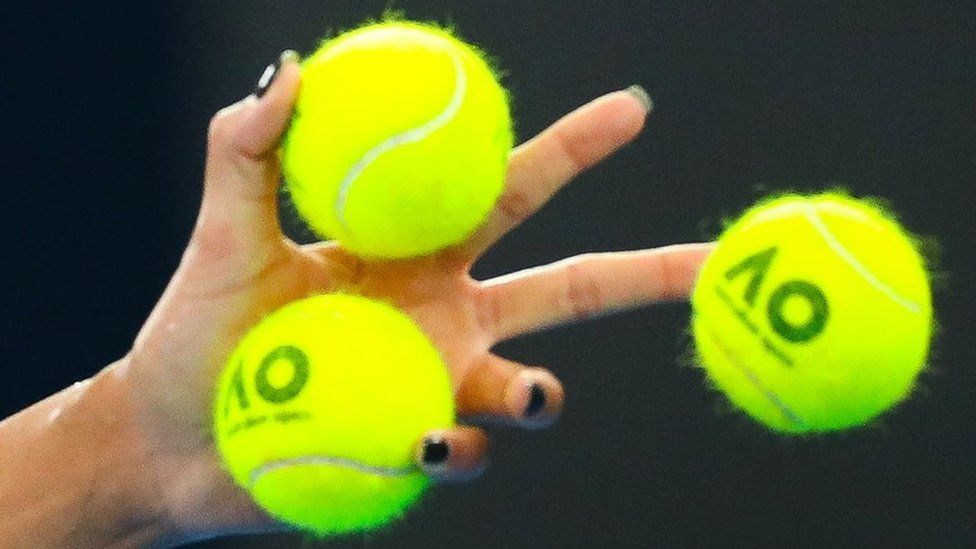Covid-19: Sports equipment presents ‘low risk’
The risk of coronavirus transmission from sharing sports equipment is “lower than once thought”, a study suggests.
Researchers, led by Liverpool School of Tropical Medicine, applied live virus particles to nine types of sports equipment and a control material.
They concluded it “seems unlikely” that sports balls and accessories are a major cause for transmission.
The Strike study found the virus was least transferrable on absorbent materials like cricket gloves and tennis balls, compared with non-porous equipment like racing saddles and rugby balls.
The researchers found that there was “rapid decay” of viral particles across several types of equipment, and it was “very difficult” to transfer live virus back off it.
“Close contact” between players is likely to be a more important mode of spreading the virus than sharing equipment, researchers concluded.
James Calder, from Imperial College and Fortius Clinic, said: “The findings in this study are important not only for elite athletes, but also for community sports and our schools.
‘Focus on players, not equipment’
During the study a low dose and a high dose of live coronavirus was applied to a cricket glove, a football, a golf ball, a piece of gym pit foam, a horse saddle, both red and white cricket balls, a rugby ball and a tennis ball, as well as a piece of stainless steel as a control material.
Dr Emily Adams, a senior lecturer at the Liverpool School of Tropical Medicine, said: “Anything that is slightly absorbent like a tennis ball or some of the leathery cricket balls, it’s very difficult to transfer any live virus off those. So we think that transmission from sports equipment is probably very low in these cases.
“Basically in many sports, like tennis, really the public health intervention should be focused on players and how players interact before a game, during a game and after a game and in transport rather than the sports equipment itself.”
The study concludes that, given the differences in virus transfer between the types of sports equipment, the findings could “direct the engineering of materials that retain and absorb virus” as opposed to water-repellent materials, where the ability to transfer virus particles back off a surface is greater.
The full report appeared on the BBC news website 10/2/21. See the full article here




